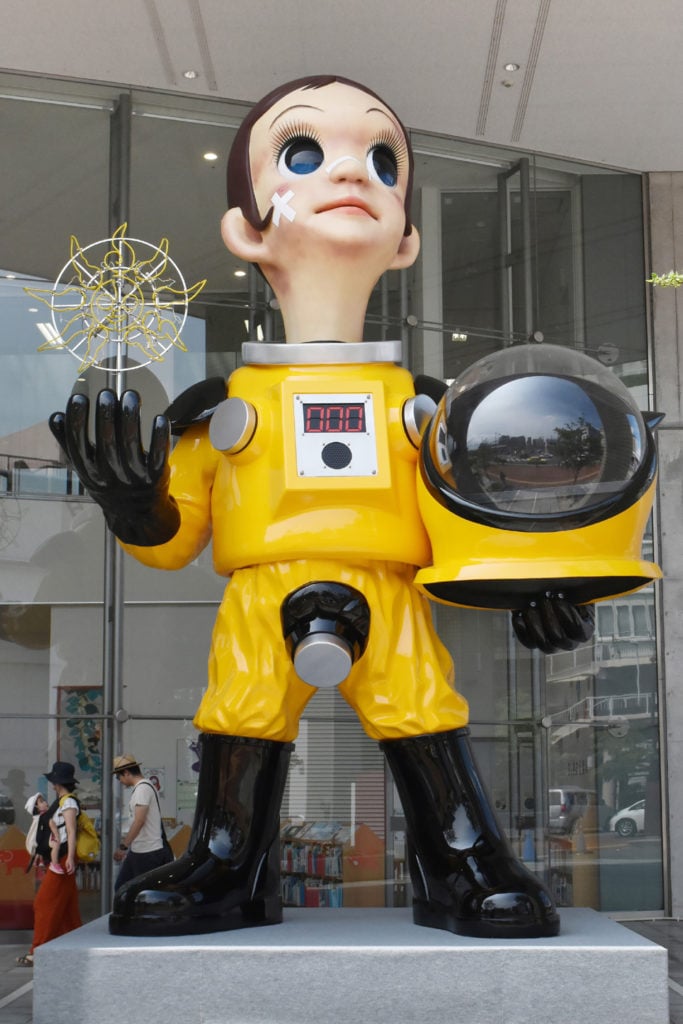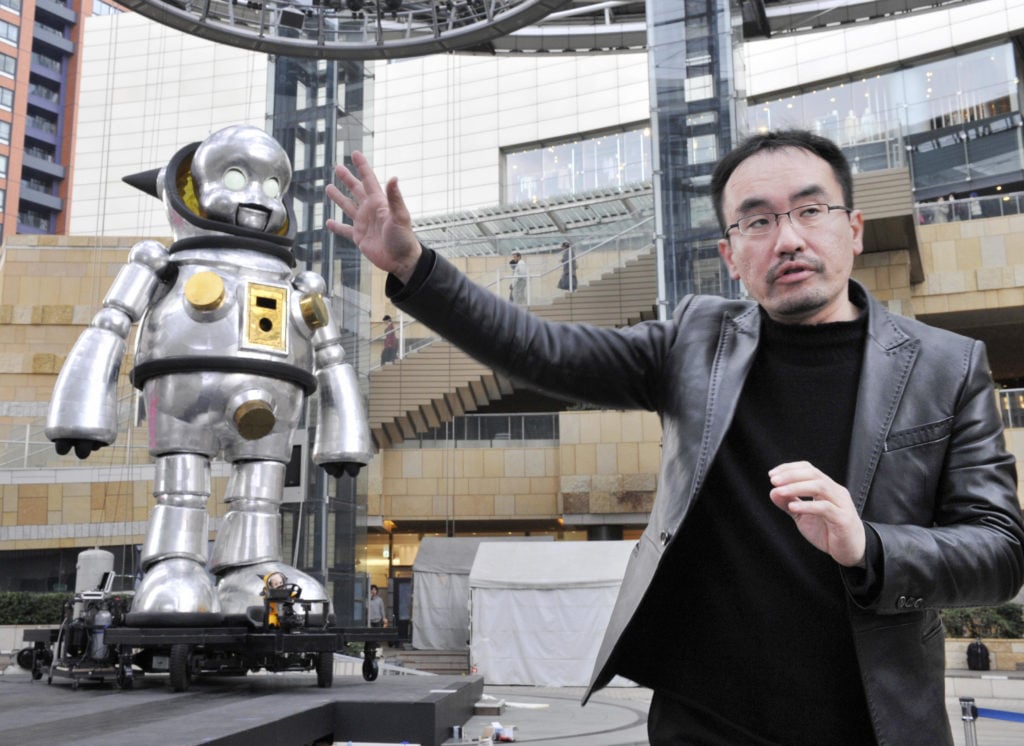Art World
This Giant Sculpture of a Child in a Hazmat Suit Was Meant to Inspire Hope—Then People Got Creeped Out
After backlash, the city of Fukushima has decided to remove Kenji Yanobe's towering public sculpture.

After backlash, the city of Fukushima has decided to remove Kenji Yanobe's towering public sculpture.

Taylor Dafoe

It was meant to symbolize a “world free of nuclear disaster”—until it became a PR disaster.
Earlier this month, Japanese artist Kenji Yanobe unveiled Sun Child, a 20-foot-tall public sculpture he donated to the city of Fukushima. Installed outside a children’s learning center in the city, the statue depicts a child in a bright yellow hazmat suit with a radiation counter that reads “000.”
For Yanobe, the piece was meant to inspire hope. But many viewers didn’t feel quite so uplifted by the sculpture. In fact, they found it downright creepy.
Fukushima is still recovering from the devastating earthquake and ensuing tsunami in 2011, which resulted in the meltdown of the city’s power plant. The worst nuclear disaster since Chernobyl left 34 dead, 39 injured, and required the evacuation of 150,000 citizens.
Almost as soon as the monument was unveiled, it became the topic of intense debate both in the city itself and online. Some were concerned with specifics—from the science behind it (natural radiation levels would prevent the dosimeter from ever actually hitting zero) to the tube extending from the crotch (it’s neither accurate for hazmat suits nor appropriate for a children’s center, detractors claimed). Almost everyone against the statue—roughly 70 percent of the city, according to a local survey—agreed that the work was simply in bad taste.
Now, less than a month after its installation, the Fukushima government has announced that it will take down the controversial sculpture “as soon as possible.”

Japanese artist Kenji Yanobe in front of his work, Giant Torayan in Tokyo, 2009. Photo: YOSHIKAZU TSUNO/AFP/Getty Images.
“I judged it impossible to keep displaying a statue meant to be ‘a symbol of reconstruction’ when citizens are divided over it,” Fukushima city mayor Hiroshi Kohata said in a statement Tuesday.
The sculpture, which debuted in 2011 before traveling throughout the country, is in keeping with much of Yanobe’s output. The artist is known for making sculptures that imagine quirky consumer goods for a futuristic, post-apocalyptic world—things like a “Survival Racing Car” or a weaponized robotic doll for children. Variations on a radiation suit—including the yellow one with the crotch tube in Sun Child—are a common theme in his practice.
On August 10, Yanobe released a statement on his website apologizing for the sculpture, explaining that he intended to make a “work that encourages people.” He followed that up with another one this week reflecting on the decision to remove it.
“It’s truly regrettable, but I thought we shouldn’t provoke a confrontation any more among people inside and outside the city,” the artist said.